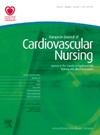虚拟现实与心脏康复:勾勒其有效性机制的新中间理论
IF 3.9
3区 医学
Q2 CARDIAC & CARDIOVASCULAR SYSTEMS
引用次数: 0
摘要
背景 为减轻心血管疾病患者的症状并改善治疗效果,国际指南建议进行心脏康复治疗。然而,患者对康复计划的依从性仍不理想,影响了康复计划的效果。虚拟现实技术已在不同领域(如神经和创伤后)被证明能有效提高康复治疗的依从性。在心脏病学领域,虚拟现实技术已被证明能有效改善功能能力和一些心理参数(如焦虑、抑郁和情绪压力)。尽管这种数字技术的使用越来越多,但有关其潜在作用机制的信息仍然缺乏。目的 本中程理论旨在解释虚拟现实技术在心脏康复中的作用机制。方法 采用归纳-演绎法来发展这一中程理论。三个步骤包括综合关键概念、界定这些概念之间的关系和建立假设模型。结果 这一中程理论提出了虚拟现实的近程和远程结果。近端结果被归类为心理(即情绪压力、抑郁和焦虑)和身体(即运动能力)层面的反应,这些反应反过来又会影响康复的坚持(即远端结果)。虚拟现实与结果之间关系的中介因素既有近端中介因素,也有远端中介因素。近端媒介在神经层面被激活,产生视觉、听觉和触觉等多感官体验。这改变了人们的感知,诱发了一种身临其境的意识改变状态,并激活了注意力、享受感和存在感等远端中介。远端介质的激活可分散与疾病和医疗环境相关的负面外部刺激,并通过与虚拟世界的互动感知积极情绪。因此,这些中介因素会影响生理和心理反应,从而提高对心脏康复的整体依从性。虚拟现实与康复依从性之间关系的调节因素包括年龄、性别、对技术的信任度和认知状况(图 1)。结论 这一中间理论旨在阐明虚拟现实技术提高心脏康复依从性的机制。有必要进一步开展定性和定量研究,以检验其假设模型。本文章由计算机程序翻译,如有差异,请以英文原文为准。
Virtual reality and cardiac rehabilitation: a new middle-range theory to outline its mechanism of effectiveness
Background To reduce symptoms and improve outcomes in patients with cardiovascular diseases, international guidelines recommend cardiac rehabilitation. However, patients’ adherence to rehabilitation programs remains suboptimal, compromising its beneficial effects. Virtual reality has proven to be effective in enhancing adherence to rehabilitation in different fields (e.g., neurological and post-trauma). In the cardiological field, it has been proven effective in improving functional capacity and several psychological parameters (e.g., anxiety, depression, and emotional stress). Despite the increasing use of this digital technology, there is still a lack of information regarding its underlying mechanism of effectiveness. Purpose This middle-range theory aims to explain the mechanism of effectiveness of virtual reality in cardiac rehabilitation. Methods An inductive-deductive approach was used to develop this middle-range theory. Three steps were conducted including synthesis of key concepts, definition of the relationship between these concepts, and setting up of a hypothetical model. Results This middle-range theory proposes both proximal and distal outcomes of virtual reality. Proximal outcomes are classified as responses at the psychological (i.e., emotional stress, depression, and anxiety) and physical (i.e., exercise capacity) level, which, in turn, influence adherence to rehabilitation (i.e., distal outcome). Mediators of the relationship between virtual reality and outcomes are both at a proximal and distal level. The proximal mediators are activated at the neurological level to generate a multisensory experience of sight, hearing, and touch. This alters perception, by inducing an immersive altered state of consciousness and activating the distal mediators of attention, enjoyment, and sense of presence. The activation of the distal mediators promotes distraction from negative external stimuli related to the disease and healthcare setting and perception of positive emotions by interacting with the virtual world. Consequently, these mediators influence physical and psychological responses that enhance overall adherence to cardiac rehabilitation. Moderators of the relationship between virtual reality and rehabilitation adherence include age, gender, trust in technology, and cognitive status (Figure 1). Conclusions This middle-range theory aims to clarify the mechanism by which virtual reality enhances adherence to cardiac rehabilitation. Further qualitative and quantitative studies are warranted to test its hypothetical model.
求助全文
通过发布文献求助,成功后即可免费获取论文全文。
去求助
来源期刊

European Journal of Cardiovascular Nursing
CARDIAC & CARDIOVASCULAR SYSTEMS-NURSING
CiteScore
5.10
自引率
10.30%
发文量
247
审稿时长
6-12 weeks
期刊介绍:
The peer-reviewed journal of the European Society of Cardiology’s Council on Cardiovascular Nursing and Allied Professions (CCNAP) covering the broad field of cardiovascular nursing including chronic and acute care, cardiac rehabilitation, primary and secondary prevention, heart failure, acute coronary syndromes, interventional cardiology, cardiac care, and vascular nursing.
 求助内容:
求助内容: 应助结果提醒方式:
应助结果提醒方式:


